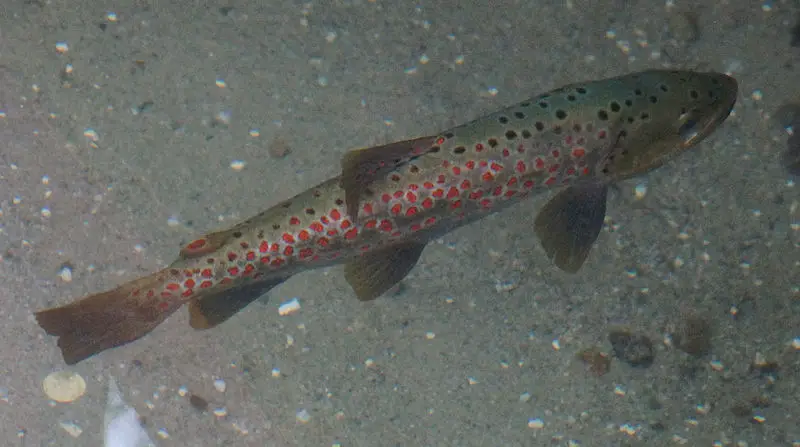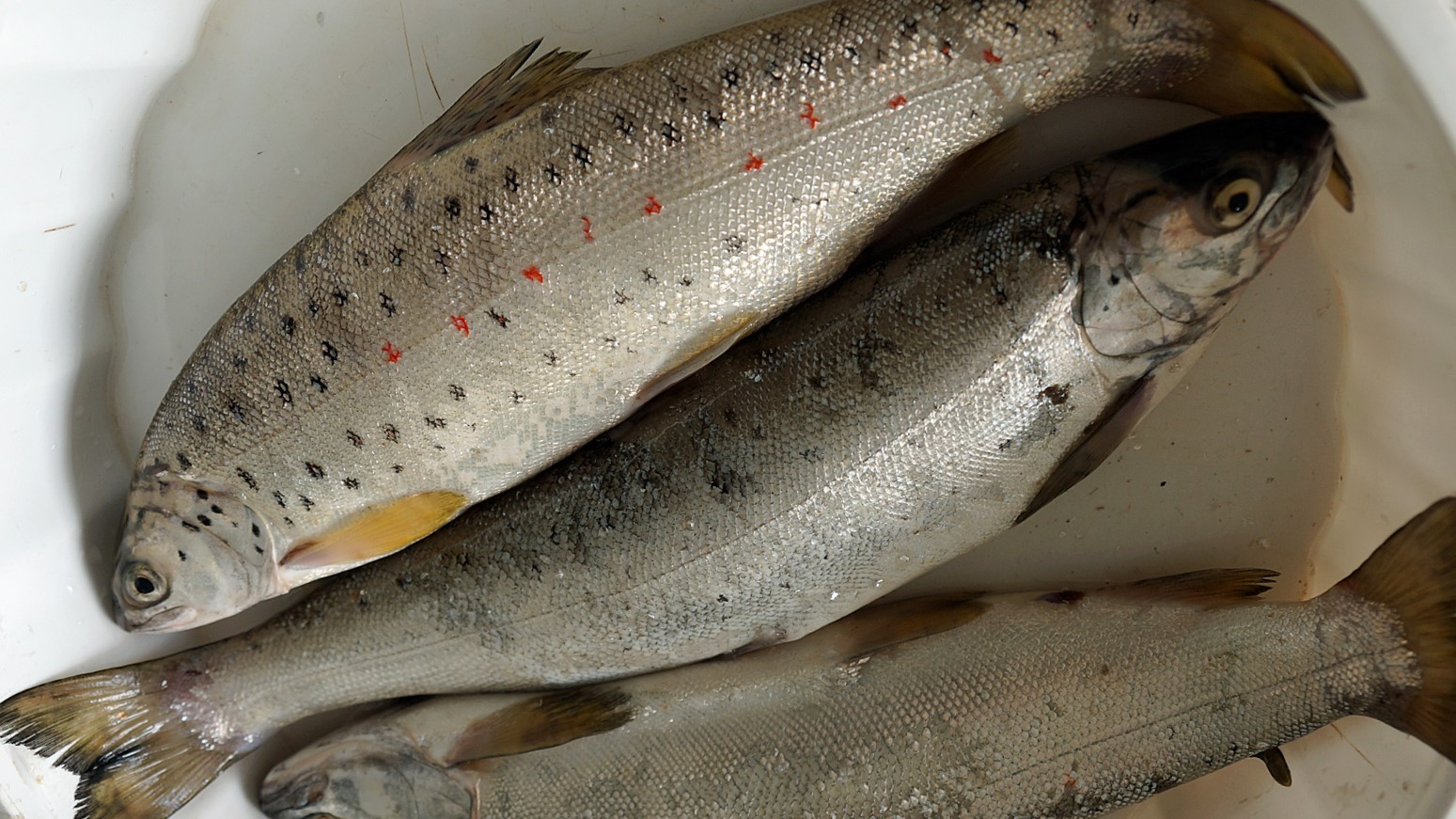The next trout in my series of less common trout is the Lake Ohrid brown trout (Salmo Letnica)
I find the Ohrid trout a fascinating, although endangered trout. They are endemic to the Lake Ohrid watershed located between North Macedonia and Albania.
So what makes Lake Ohrid trout interesting? Well, they are among the largest growing ‘brown trout’ in Europe. With the largest confirmed Ohrid trout weighed in at an impressive 17kg (37lb), with rumors of trout in the area reaching 30kg (66lb).
While a 37lb brown trout might not be a record breaker. It is certainly right up there by European standards (Only 8oz lighter than the record brown trout). Some stock Ohrid trout in America also grew to impressive sizes. So there is little doubt, that the Ohrid trout have some serious growth potential.
One potential reason why the Ohrid trout grows so large is its slow growth rate. They grow slower and spawn a couple of years later than the typical brown.
The next interesting fact is that the Ohrid trout might just be the oldest known lineage of brown trout.
What do Ohrid trout look like?
Ohrid trout typically have a silvery coloration. Similar to that of a sea or lake resident brown trout. They have numerous large black dots predominantly above the lateral line. Along the lateral line, they also have a scattering of red dots.

What are they called?
Lake Ohrid brown trout have several common names. In Macedonia, they are known as Letnica, in Albania the Koran. In the United States, they are sometimes called the Macedonia trout.
Are Ohrid trout just brown trout?
So are Ohrid trout truly a species in their own right, or are they just a variation or subspecies of the more widespread German or Atlantic brown trout Salmo trutta?
This is an area of some controversy, and the debate regarding the exact taxonomic status is ongoing.
What is clear, is that the Ohrid trout has been isolated from all other brown trout populations for a very long time and they are considered to be genetically sufficiently distinct to be classified as a separate species. In saying that, they are still considered to be part of the wider brown trout species complex.
Where are Ohrid trout found?
Ohrid trout are predominately found within the Lake Ohrid catchment bordering North Macedonia (The country, not the province in Greece) and Albania in the Balkan region of Europe. They are also stocked in a single lake in Serbia. There has been stockings in America, but no viable populations were established.
Lake Ohrid
Ohrid trout are endemic to the Lake Ohrid watershed, which includes the lake itself. Its outlet the Black Drin river and various feeder tributaries.
Lake Ohrid, is widely regarded as Europe’s oldest and deepest lake, being formed some four million years ago and reaching deeps down to 500ft. Its geographic location, close to the Mediterranean allowed it, and the resident fish to escape glaciation during the previous ice ages.
I have heard mixed reports on the state of the fishery, some sources say the fishery is in decline and the trout are endangered due to the effects of overfishing, pollution, and environmental damage. Although feedback from local anglers claims they are still plentiful.
Vlasina Lake
Ohrid trout have been introduced into the man made Vlasina lake located in Serbia, the population thrived for a time but due to fluctuations in water levels, it sounds like stockings are now required to maintain population density.
Ohrid trout stocking attempts in America
Starting in the late 1960’s Ohrid trout were stocked in various lakes and watersheds across the united states. Most (if not all) of those stockings failed to establish self sustaining populations.
The possible exception is the Pathfinder Reservoir in Wyoming which might still contain Ohrid trout or their hybrids.
According to the USGS database there was reports of Ohrid trout in Minnesota as recently as 2008, but I can find little information on them.
Occasionally fishermen still report catching Ohrid trout, but without genetic analysis positive identification is difficult to prove.
(Title photo: Ohrid Trouts in a fish shop in Pogradec, Albania. courtesy of Albinfo, CC0, via Wikimedia Commons)

